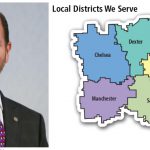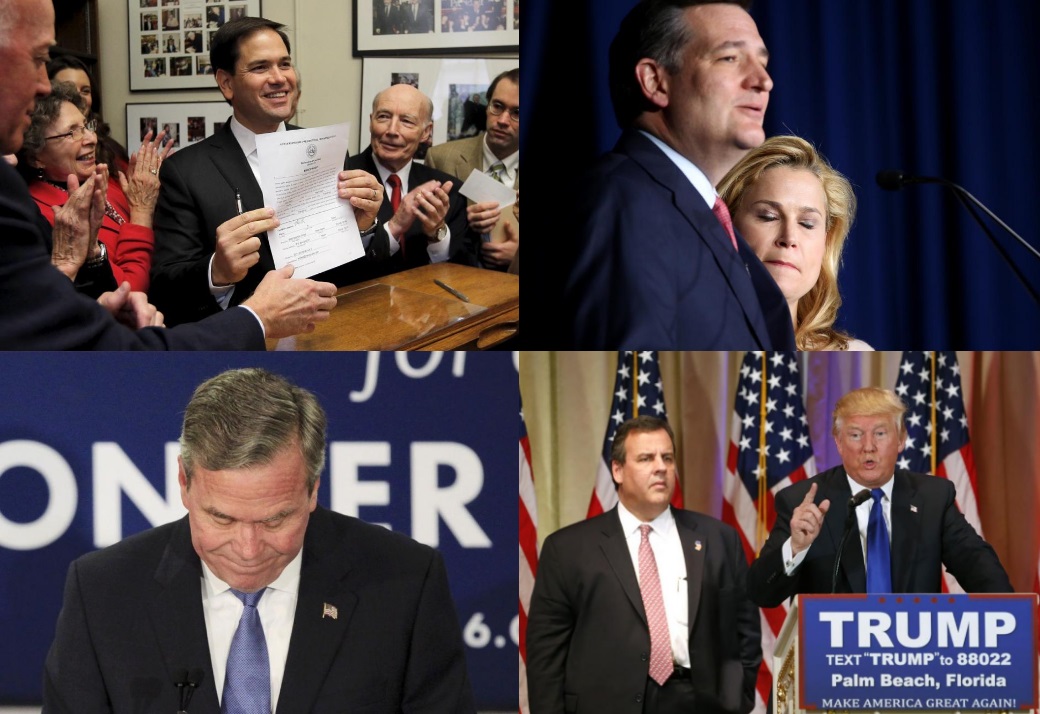Virtually every major media outlet has given their take on the 2016 Presidential election, to the point where these examinations feel more indicative of each outlet’s identity than any real, comprehensive explanation of the event. Statistics-driven 538’s series focuses on how the rest of the media misinterpreted the polling data, perennial news explainer Vox largely covered the mentality of a confused electorate, Time’s immediate post-mortem reflected the magazine’s bias toward conventional media wisdom, etc. For media organizations, the 2016 election is a grand and complicated Rorschach test: what you see in the pattern is about you, not the pattern.
With this three part series looking back at the election, Torchlight hopes to cut through the distorted, ideology-driven conversation by laying out the facts to draw clear and comprehensive conclusions about the nature and causes of the event.
Today, Tom Rich will talk about the Republican primary resulting in the nomination of Donald Trump. On Wednesday, I’m discussing the Democratic primary resulting in the nomination of Hillary Clinton, and the series concludes on Friday with Andrew Coleman’s examination of the many significant factors that led Trump to victory and the Presidency over Clinton. We hope you find the series enlightening and clarifying.
– Josh Kyu Saiewitz
If we’re going to understand where we are, it’s worth understanding how we got here. For our purposes, the beginning of that story is the Republican primary. How did the party of Lincoln, Theodore Roosevelt, and Eisenhower become the party of Trump?
Blogger Doug Muder has a general theory of how Republican primaries function, or at least how they functioned before last year. Broadly, Muder divides the party into four factions: Corporatists (think Jeb Bush or Chris Christie), theocrats (Rick Santorum or Mike Huckabee), neo-conservatives (John McCain and Lindsey Graham), and libertarians (Rand Paul). Like everything in politics, the definitions are murky and the borders fluid, but the model is a useful approximation of reality. Muder goes on to suggest that, in general, a Republican candidate wins once he or she is positioned as the favorite of one faction and can convince the other factions not to revolt. For instance, in 2012, Mitt Romney emerged as the corporatist choice, but took a while to convince the theocratic, neo-conservative, and libertarian voices that he wasn’t a threat to their slices of the Republican pie.
Notably, Donald Trump doesn’t make sense for any of the factions Muder describes. As a businessman, he’s most at home among the corporatists, but a good corporatist likes free trade and immigration because they bring in low-wage workers. The theocratic wing of the party pushes social issues, such as bathroom bills and opposition to abortion, but Trump’s divorces, adultery, and comparatively soft stances on abortion and LGBT rights all place him at odds with this wing. The neo-conservatives want the kind of muscular, villain-busting American global leadership they believe we exercised in the Cold War, but Trump’s fondness for Russia and disdain for NATO leaves him out in the cold with them. The libertarians would like a government that simply leaves people alone; there is little that is small or non-intrusive in Trump’s plans for military expansion and wall-building. It is true that Trump proposes to lower taxes and cut regulations, which would endear him to both the corporatists and the libertarians, but his host of negatives made it difficult for him to find a home in any one faction.
Certainly we can attribute some of Trump’s success to the large and fractured field of candidates: in the summer of 2015, there were 17 notable Republicans running for the nomination. Some, like George Pataki and Bobby Jindal, were the sorts of also-rans you expect in any campaign, but others (Kasich, Cruz, Bush) were genuine contenders from the get-go, and still others (Carson, Rubio, Paul) couldn’t be discounted, even if their odds were long. A Republican voter of any faction had plenty of choices. The corporatists could comfortably line up with John Kasich, Chris Christie or Jeb Bush, while the theocrats had Mike Huckabee, Rick Santorum, and Ted Cruz to choose among. The neoconservatives were less well-represented, with only Lindsey Graham really flying their banner, but several of the corporate types (Jeb Bush, in particular) could speak the neoconservative language. The libertarians probably had the weakest field, with only Rand Paul directly appealing to them. The larger point here, beyond sorting the 17 into categories, is that there were a lot of candidates, all trying to solidify their element of the party while simultaneously working out an appeal to the other segments.
While the field was unusually large, primaries almost always involve fending off challengers of varying seriousness. And Trump was in a bad place at the beginning of the process: he was behind in the polls and had raised comparatively little money. A study by Harvard’s Kennedy School of Government notes that how well a candidate is doing in the polls and how much money that candidate has raised generally predict how much coverage journalists will give that candidate. The same study finds that coverage of Trump early in the primary was similar to “the coverage expected of a frontrunner.” Because news and polls drive one another, this unusually positive and pervasive coverage served to push Trump further forward than his fundraising and polls would indicate, and as it pushed him forward he became more and more of a story for journalists.
But while media coverage can make people aware of a candidate and, to some extent, shape opinion about him or her, it can’t go into a voting booth and pull a lever for that candidate. Ultimately, Republican primary voters had to do that. What was it that made them choose to pull the lever for Trump?
Frustration with establishment Republicans is an easy factor to identify; after all, Tea Party Republicans managed to blunt Speaker John Boehner’s agenda and put the fear of primary challenges in most Republican members of Congress. They even defeated Eric Cantor, then the House Majority Leader and senior member of the party. The Tea Party attack on mainline Republicans was shaped by the idea that the establishment wasn’t doing what the people really wanted them to, and Trump appealed to this frustration by consistently mocking and attacking the Republican leadership.
A second commonly-cited reason for Trump’s success is economic anxiety: Trump promised to bring back factories and good middle-class jobs, and therefore people who would benefit from that flocked to his banner. However, Nate Silver’s analysis of exit polls, conducted as the primaries were ongoing, reveals that Trump voters were on the whole better off than their peers, earning more than average for their states. Silver notes, too, that while overall Republican turnout was up in the primaries compared to 2012, turnout among lower-income Republicans was not: there was not a sudden influx of working-class people into the party.
Additionally, Silver’s data shows that while Trump’s supporters earned more than average for their states, among their primary-voting peers they tended to earn least. Among Cruz, Kasich, and Trump supporters in the 23 states polled, Trump voters were the wealthiest only once; in 13 states, they were the least-wealthy of the three candidates’ followers. Finally, Trump supporters reported being “very worried” about the overall direction of the economy. Taken as a whole, the available data seems to paint Trump primary voters as a group of people who are doing reasonably well for themselves, though not the best of their Republican primary-voting cohort, and who are afraid that the economy is heading toward some disaster.
But neither anger at the establishment nor economic anxiety seem to tell the whole story. Ted Cruz abused the Republican establishment as energetically as Donald Trump did, and made similar promises about returning jobs. Cruz wound up coming closest to beating Trump, so those appeals clearly worked. But what was the difference that pushed Trump over the top?
The deciding factor was that Trump tapped into racism in a direct way that the other Republicans did not. During the primary, Reuters found that supporters of Trump were more likely to describe African Americans negatively than supporters of other candidates, using terms like “violent,” “criminal,” and “lazy.” The same poll found Trump supporters would generally desire not to live in communities where people came from diverse cultures. We should be cautious in how we interpret that poll: it shows correlation, not causation. The data can tell us that around half of the people who voted Trump in the primaries held racist views, but it can’t tell us that they pulled that lever because they held racist views. But there is a long, long tradition of racist appeals, overt and covert, in American electoral politics, and Trump’s rhetoric is not far off from that of, say, former Presidential candidate and ardent racist George Wallace: “segregation now, segregation tomorrow, and segregation forever” is not such a different rallying cry than “build the wall!”
When we look at Trump’s statements about building a wall on the Mexican border, banning travel from predominantly Muslim nations, and describing inner-city black communities as apocalyptic war zones, we see rhetoric that appeals much more blatantly to the hard-racist voter. You don’t have to do any interpretation to get there. Similarly, when we see people like David Duke endorsing Trump, or an actual gathering of neo-Nazis shouting “heil Trump!” while raising a fascist salute, we don’t need to do much mental legwork to conclude that while not every Trump voter was racist, the racist voter voted Trump.
That’s not to say this was a takeover of the Republican primaries by some external, racist force. A Politico analysis conducted during the primary argues that while there were many first-time primary voters, those people were also reliable Republican voters in previous general elections; in other words, it was a faction internal to the party that responded to Trump’s appeal, a faction which cut across and overwhelmed the four factions outlined by Doug Muder. Even if Politico’s analysis is wrong or overstated, the turnout in the primary was high, but by no means unbelievably so; a Pew study showed that it fell just short of the 2008 record.
This faction has long existed, in American politics generally and in the Republican party specifically. It became powerful in the Republican party under Richard Nixon, whose Southern Strategy won him reelection by appealing to the racist South in the wake of the Civil Rights movement. For many years, Republican campaigns tried subtle appeals to this group. Lee Atwater, a Reagan advisor and campaign manager for the first President Bush, summed up the strategy as discussing “totally economic things and a byproduct of them is [that] blacks get hurt worse than whites.” In the full interview (which contains racial epithets), Atwater attempts to make the case that by focusing on economic issues, one can win over racist voters to win elections, gradually push racial problems out of people’s minds, and move forward to a conservative, small-government, race-blind utopia. Nevermind that the Republicans were never able to accomplish their stated goals, despite holding significant power in government from Nixon to Trump: the welfare state still exists, we still have foreign alliances and commitments, and taxes on high-earners have not been slashed to nothing. Too, the white supremacist nation implicitly promised by the Southern Strategy did not fully materialize; the country is more diverse than ever, although minority groups still face significant difficulties. Accomplishing neither their stated nor their implicit goals, the GOP ultimately discovered with Trump that they couldn’t string their voters along forever.
If we take a step back and look at the full picture, we see a primary election in which a confluence of events made it possible for an electoral faction, created, courted, but not satisfied by the party’s strategy, to emerge and seize control. For nearly half a century, the Republican Party establishment had relied on a strategy of subtly wooing racist voters, but not explicitly addressing their concerns. As the 2016 primaries began, a wide and fractured field meant that it would be very difficult for a frontrunner to emerge early and begin generating a positive feedback loop between electoral success, fundraising, and media coverage. Because of his personal ability to generate headlines, Donald Trump was able to circumvent this problem and push forward further and earlier than his fundraising and polling would normally allow. Along the way, he appealed more directly to racists among Republican voters than his rivals, causing those voters to participate more heavily in the primaries than in previous years.
There was nothing inevitable about Donald Trump. If he had been less of a media darling, or the field less fractured, or the economic situation different, he might not have been able to garner attention, polling results, and primary victories. But, ultimately, the risk of a Trump-like candidate was always present: there was always a faction of voters in the Republican party attracted by the below-the-surface racism of the Southern Strategy, waiting for somebody to say in public what they’d been thinking in private.


